Disclosure: This article contains affiliate links. We may earn a commission from purchases at no extra cost to you, which helps our travel content.
The mist was just lifting off the Danube as our bus rounded the bend, revealing what looked like something straight out of a fairytale. Stone towers perched dramatically atop a verdant hillside, the morning light catching the ancient walls in a golden glow. I'd heard tales of Visegrad's medieval splendor from a Hungarian mate I'd met at a techno festival in Berlin (of all places), but seeing it with my own eyes was something else entirely. As someone who grew up surrounded by Ireland's ancient ruins, I thought I'd become somewhat immune to the charms of old stones. I was dead wrong. This small Hungarian town, just a stone's throw from Budapest, packs more historical punch in its modest boundaries than places triple its size. As I shouldered my trusty backpack and set off toward the citadel towering above, I couldn't help but feel that familiar tingle of adventure—the one that reminds me why, even after all these years of wandering, I still can't resist the call of places where history seeps from the very stones.
The Citadel: Standing Guard Over Centuries
Hiking up to Visegrad's Upper Castle (or Fellegvár as the locals call it) is like walking through pages of a history book. The path winds through forest that reminded me, in fleeting moments, of the woods near my childhood home in Limerick—though with considerably more elevation gain, I might add. I'd recommend taking the trail slowly, not just because the 30-minute climb will have your calves burning if you rush it, but because each turn offers increasingly spectacular views of the Danube Bend below.
Built in the 13th century after the Mongol invasion, this stone sentinel has witnessed Hungarian kings, Ottoman conquerors, and Habsburg rulers come and go. What struck me most wasn't just the imposing military architecture—though the arrow slits and defensive walls are impressive enough—but how the castle seems to grow organically from the very mountain itself, as if the earth pushed up these stones in defiance against time.
Inside, the exhibition halls offer a fascinating glimpse into medieval weaponry and daily castle life. I spent a good hour examining the reconstructed trebuchet (a massive medieval siege weapon) and trying to wrap my head around how engineers of that era created such devastatingly effective machines without modern technology. The Solomon Tower houses perhaps the most comprehensive exhibition, with artifacts dating back to the 14th century when the castle was at the height of its glory under King Matthias Corvinus.
As a court reporter back home, I've developed a bit of a professional interest in historical justice systems—and the castle's dungeon and torture chamber exhibition didn't disappoint (in an educational sense, of course). The detailed explanations of medieval jurisprudence were both fascinating and terrifying. Let's just say I'm grateful to be taking notes on court proceedings in 21st century New Orleans rather than 15th century Hungary.
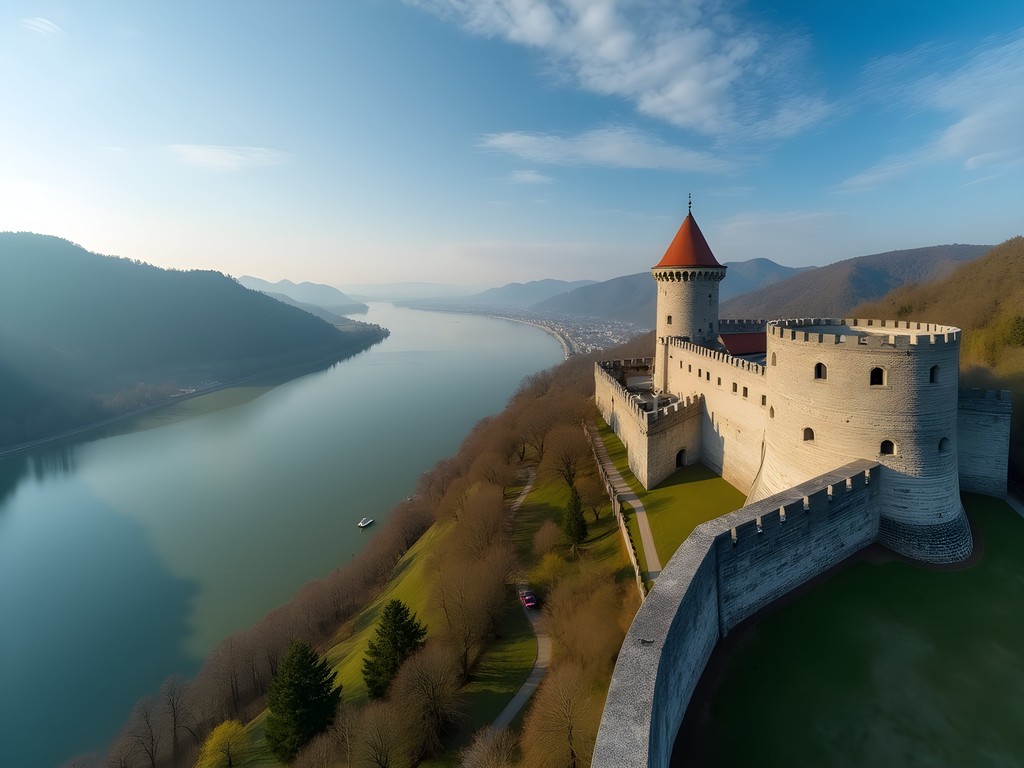
💡 Pro Tips
- Visit early in the morning to avoid crowds and catch the magical morning light on the Danube
- Wear proper walking shoes—the paths to and around the castle can be uneven and steep
- The citadel is usually less crowded on weekdays, especially before noon
Royal Palace: Renaissance Splendor Restored
While the citadel offers dramatic views and military history, it's the Royal Palace in Lower Visegrad that truly captures the opulence of Hungary's golden age. Nestled at the foot of the hill, this reconstructed Renaissance palace was once among Europe's most magnificent royal residences—a Hungarian Versailles of its day, if you will.
The palace was largely destroyed during the Ottoman occupation, but painstaking archaeological work since the 1930s has brought significant portions back to life. Walking through the reconstructed courtyards with their elegant arcades and red marble fountains, I could almost hear the echoes of medieval court life—the music, the political intrigue, the elaborate feasts.
Speaking of feasts, I was pleasantly surprised to discover that the palace's Renaissance Restaurant offers vegan options upon request. While traditional Hungarian cuisine tends to be meat-heavy, the chef prepared a delightful mushroom paprikash that satisfied my plant-based preferences without sacrificing authentic flavor. If you're planning to visit and have dietary restrictions like me, I'd recommend bringing along a Hungarian phrase book to help communicate your needs—it proved invaluable throughout my trip.
The palace's crown jewel is undoubtedly the reconstructed Hercules Fountain with its striking red marble. King Matthias, a Renaissance man if there ever was one, commissioned Italian artists to create this masterpiece, and seeing the water flow from it today after centuries of destruction feels nothing short of miraculous. The palace museum houses an impressive collection of period furniture, tapestries, and everyday objects that paint a vivid picture of royal life in the 15th century.
Time your visit right and you might catch one of the regular historical reenactments. I was fortunate enough to witness a medieval tournament complete with period-accurate costumes, falconry demonstrations, and archery contests. The performers take their historical accuracy seriously—something this former history student greatly appreciated.
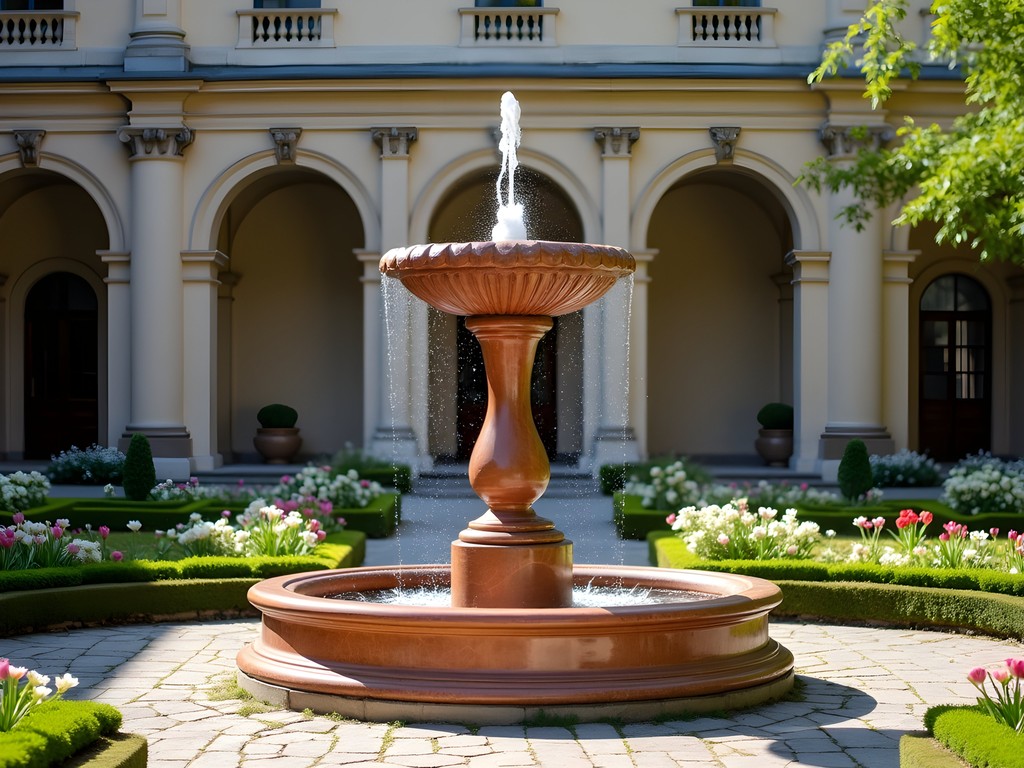
💡 Pro Tips
- The Renaissance Restaurant requires reservations for groups larger than 4 people
- Ask about the guided tours in English—they run several times daily in spring and summer
- The palace often hosts medieval festivals on weekends—check their calendar before planning your visit
Solomon Tower: Where History Meets Legend
Between the Upper Castle and Royal Palace stands the Solomon Tower, named after the Hungarian king who was allegedly imprisoned here in the 11th century. This hexagonal defensive tower might be easy to overlook when planning your Visegrad itinerary, but trust me—it's worth dedicating at least an hour to explore.
The tower houses one of the most comprehensive exhibitions on medieval life in Hungary, with each floor dedicated to a different aspect of the period. What particularly caught my attention was the collection of everyday items—cooking utensils, games, clothing—that offered glimpses into the lives of ordinary people, not just nobility. As someone who's always been more fascinated by how regular folks lived than by royal drama, I found these displays particularly moving.
The wax figures depicting scenes from medieval court life are admittedly a bit cheesy, but they do help visualize how these spaces were used. The armory exhibition is impressive, featuring not just weapons but also the evolution of armor through the centuries.
For photography enthusiasts like myself, the Solomon Tower offers some of the most atmospheric shots in all of Visegrad. The light filtering through the narrow windows creates dramatic shadows across the stone floors, and the view from the top level frames the Danube perfectly. I found my travel tripod essential here, as the interior lighting can be challenging and the longer exposures needed benefit from stability.
The tower also houses a small but excellent exhibition on the history of the Visegrád Group (V4)—the cultural and political alliance between Hungary, Poland, Czech Republic, and Slovakia that was named after this very town. It's a fascinating look at how this medieval meeting place continues to influence Central European politics today.
Don't miss the medieval games area in the courtyard, where visitors can try their hand at period-accurate challenges. I embarrassed myself thoroughly attempting to shoot a replica medieval crossbow, much to the amusement of a group of local schoolchildren on a field trip. Some skills, it seems, don't come naturally to this Irish lad.
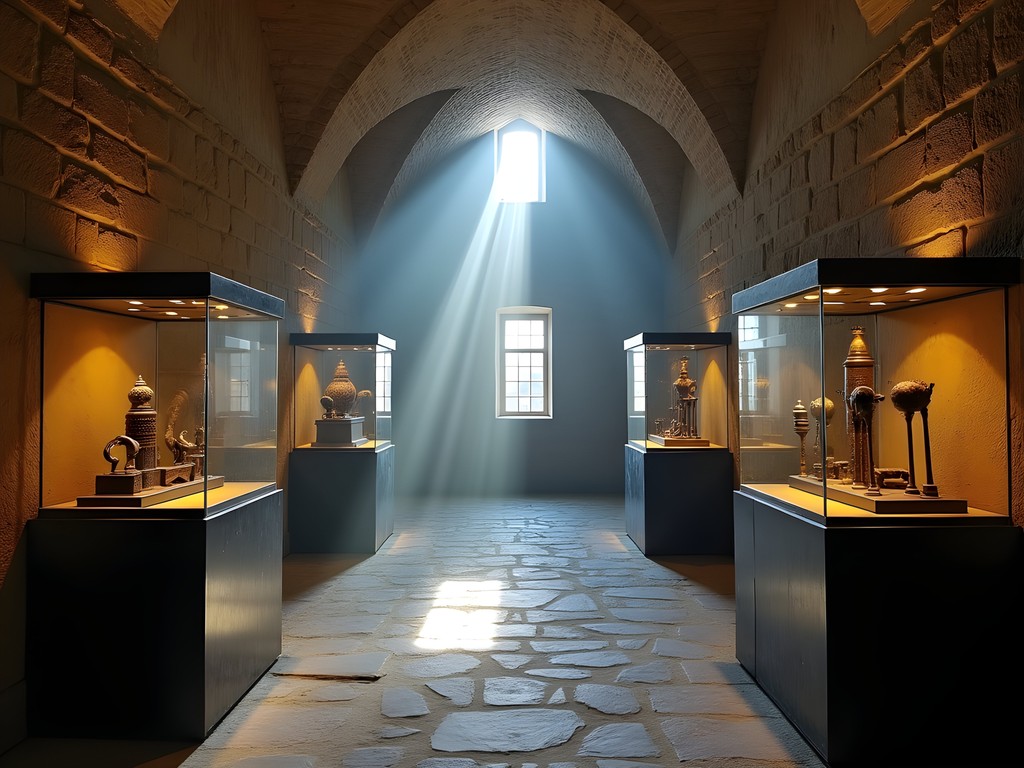
💡 Pro Tips
- The tower has many stairs and no elevator—plan accordingly if mobility is a concern
- Photography is allowed without flash—bring a camera that handles low light well
- Ask the staff about the tower's secret passages—there's one that's occasionally opened for visitors
A Plant-Based Pilgrim in Meat-Loving Hungary
Traveling as a vegan in Hungary presents its challenges, but Visegrad surprised me with several accommodating options. While traditional Hungarian cuisine revolves around paprika-laden meat dishes, I discovered that with a bit of research and my limited Hungarian vocabulary, plant-based eating was entirely feasible.
My home base during my stay was the charming Patak Park Hotel, which not only offers stunning views of the surrounding hills but also went out of their way to prepare vegan breakfast options each morning. A simple email explaining my dietary needs before arrival ensured I wasn't left hungry while watching other guests enjoy their morning feast.
For lunch, the Vár Büfé near the citadel entrance offers simple but satisfying options. Their grilled vegetable sandwich can easily be made vegan by requesting no cheese, and their lángos (fried dough) is traditionally made without dairy. Paired with a local beer while overlooking the Danube, it makes for a perfect midday break.
Dinner proved most interesting at Renaissance Restaurant in the Royal Palace complex. While not advertised on their menu, the chef prepared a mushroom-based version of traditional paprikash upon request that rivaled any meat dish in flavor. The key, I learned, is in the quality of Hungarian paprika—nothing like the dusty stuff sitting in most American spice cabinets.
For self-catering options, I relied heavily on my portable food container to pack snacks and small meals from ingredients I purchased at the small grocery store in town. Hungarian fresh bread, local produce, and ajvar (a roasted red pepper spread popular throughout the Balkans) became staples during my weekend exploration.
One unexpected vegan find was at the medieval festival occurring during my visit, where one vendor specialized in traditional millet and barley porridges prepared as they would have been in medieval times—simple, hearty, and completely plant-based. The vendor explained that while meat was certainly consumed in medieval Hungary, many common people relied heavily on grains and vegetables for daily sustenance—a historical fact that works in modern vegans' favor!

💡 Pro Tips
- Email accommodations in advance about dietary needs—most are happy to accommodate with notice
- Learn the Hungarian phrases for 'no meat,' 'no dairy,' and 'no eggs'
- The local farmers market (Saturday mornings) offers excellent fresh produce for self-catering
Beyond the Castle: Hiking the Danube Bend
While Visegrad's medieval treasures rightfully claim the spotlight, the surrounding natural landscape deserves equal attention. The town sits at the heart of the Danube Bend (Dunakanyar), one of Hungary's most picturesque regions where the river curves dramatically around forested hills.
After a day of castle exploration, I laced up my hiking boots for an early morning trek along the Nagyvillám Trail. Starting near the bobsled track (yes, Visegrad has a summer bobsled track—a quirky modern addition to this historical town), the path winds through dense deciduous forest before opening to spectacular viewpoints over the river bend. The morning mist hovering over the water created an almost mystical atmosphere that had me fumbling for my camera every few minutes.
The trail system is well-marked with color-coded signs, making it accessible even for hiking novices. I opted for the medium-difficulty blue trail, which took about three hours at a leisurely pace with plenty of photo stops. The path eventually connects with routes leading to the nearby town of Szentendre, though that would require a full day's commitment.
For those less inclined toward hiking, the Nagyvillám Lookout Tower offers similar views with significantly less effort. Located near the bobsled track, it's accessible by car or a short uphill walk from the main road. The wooden structure provides a 360-degree panorama that captures the full majesty of the Danube Bend.
During my hike, I was grateful for my water filter bottle as it allowed me to refill from natural springs along the trail. While Hungary's tap water is generally safe to drink, having filtration capability gave me peace of mind when using natural water sources during my trek.
The spring timing of my visit meant the forest was alive with wildflowers and birdsong. According to my trail guide, autumn offers equally spectacular scenery when the forests transform into a riot of gold and crimson. Winter visits, while less common, provide a stark beauty of their own when the castle stands frosted against the snow-covered landscape.
One unexpected highlight came when I stumbled upon the ruins of a small hermitage built into a natural cave along the hillside. These lesser-known historical sites scattered throughout the forest offer quiet moments of discovery away from the main tourist paths—the kind of authentic experiences I'm always searching for in my travels.

💡 Pro Tips
- Start hikes early to avoid afternoon heat and catch the best morning light for photos
- Download the Természetjáró app for offline trail maps of the region
- Carry water and snacks as there are few facilities once you're on the trails
Final Thoughts
As my bus pulled away from Visegrad, winding back along the curves of the Danube toward Budapest, I found myself already planning a return visit. There's something about this place—perhaps the seamless blend of natural beauty and human history, or maybe the way the castle stands as a silent witness to centuries of drama—that gets under your skin. In just a weekend, Visegrad offered me a perfect balance: enough historical depth to satisfy my inner history buff, sufficient hiking trails to stretch my legs after winter hibernation, and surprising culinary flexibility for this plant-based wanderer. Whether you're drawn to medieval architecture, scenic landscapes, or simply the opportunity to step briefly into another time, this gem along the Danube delivers far beyond what its modest size might suggest. As we Irish say, 'Tis not the destination but the journey that matters'—though in Visegrad's case, I'd argue both are equally magnificent.
✨ Key Takeaways
- Visegrad packs remarkable historical depth into a small area, making it perfect for a weekend trip
- The town offers surprising accessibility for special diets, including vegan options at most restaurants
- Spring brings the perfect balance of pleasant hiking weather and fewer crowds than summer
- The combined ticket for all historical sites offers the best value and can be used over two days
📋 Practical Information
Best Time to Visit
April-June and September-October for mild weather and fewer crowds
Budget Estimate
€100-150 for a weekend including accommodation, food, and entrance fees
Recommended Duration
2-3 days
Difficulty Level
Easy


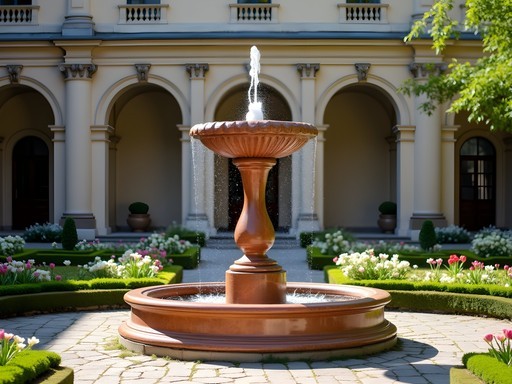


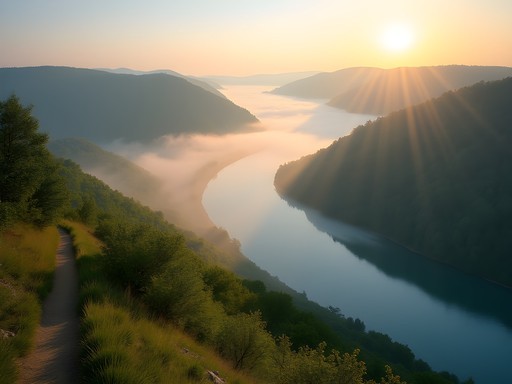










Comments
coffeebackpacker7980
Would you recommend Visegrad as a day trip or staying overnight? Planning my Hungary itinerary for next spring and trying to figure out how to allocate time.
sunsetone
Not David, but I'd say it works perfectly as a day trip from Budapest. Unless you're really into medieval history, one full day gives you enough time to see everything at a relaxed pace.
roamclimber
That shot of the castle in the morning mist is absolutely stunning! What camera do you use?
David Freeman
Just my phone actually! iPhone 18 Pro. The lighting that morning was doing all the heavy lifting!
sunsetone
I visited Visegrad a few years ago and was blown away by the Solomon Tower. Those dungeons are so atmospheric! I'm curious about your plant-based food experiences, David. I'm vegetarian too and found Hungary challenging. Did you discover any good vegetarian options in Visegrad itself? I ended up packing snacks most days when I was traveling through smaller Hungarian towns.
David Freeman
It was definitely a challenge! The Renaissance Restaurant had one vegetarian option (mushroom paprikash) that was decent. Otherwise, I mostly relied on my travel snack kit which was a lifesaver for day trips like this. Next time I'll research specific places in advance.
Riley Griffin
David, your post brought back so many memories! We took our kids (9 and 12) to Visegrad last summer and they were absolutely enchanted. The medieval tournament at the Lower Castle was the highlight for them - knights on horseback, archery demonstrations, the works! My son still talks about getting to try on a replica helmet. One tip for families: bring plenty of water for the hike up to the Citadel if you're visiting in summer. Those stone steps are beautiful but quite the workout, especially in the Hungarian heat! The view from the top makes it all worthwhile though.
sunsetnomad
This looks amazing! How difficult was it to get there from Budapest? Did you have to rent a car or is public transport an option?
David Freeman
Thanks for asking! I took the bus from Budapest which was quite straightforward. There are regular services from Újpest-Városkapu station. Takes about an hour and gives you great views along the Danube!
sunsettime
We did the public transportation too and it was super easy. Just make sure to check the return schedule as the last bus leaves earlier than you might expect!
castle_hunter
Those castle photos are amazing! Adding this to my bucket list right now.
Claire Hawkins
David, your post brought back so many memories! We visited Visegrad with our kids (8 and 10) last summer, and they absolutely loved the medieval experience. The interactive exhibits at Solomon Tower were perfect for them - my son still talks about the armor he got to try on. One tip for families that I didn't see in your post: there's a small forest trail behind the upper castle with medieval-themed wooden play structures that's perfect for letting kids burn off energy between historical sites. We also found a family-friendly restaurant in the lower town (can't remember the name but it had a red roof and playground) where they actually had decent vegetarian options - including a mushroom goulash that was surprisingly authentic. Your photos captured the magic of the place perfectly!
David Freeman
Thanks Claire! That forest trail sounds amazing - I completely missed it. And I'll have to look for that restaurant with the mushroom goulash next time. Great tips!
travelbug22
Going to Hungary next month and adding Visegrad to my itinerary after reading this! How long would you recommend staying? Is it doable as a day trip from Budapest?
David Freeman
Absolutely doable as a day trip! That's what I did. If you start early (8-9am), you'll have plenty of time to see the castle, palace, and even Solomon Tower. Enjoy your trip!
John Hart
I'd second that. A day trip works well, but if you can spare an overnight stay, the small hotels in Visegrad offer a charming experience away from Budapest's bustle. The morning light on the Danube is worth it.
John Hart
Your post brings back memories of my visit to Visegrad in 2023. The historical context you provided about King Matthias Corvinus adds valuable perspective that many visitors miss. I'd add that timing is crucial - I found early mornings offer the best photography opportunities at the Citadel before tour buses arrive. For those interested in deeper historical context, I recommend this book which provides excellent background on the medieval period. Did you manage to hike any of the surrounding trails? The views from the Nagyvillám lookout point are quite spectacular as well.
David Freeman
Great tip about the early morning visits, John! I wish I'd done that. I did manage a short hike to a viewpoint (though I'm not sure if it was Nagyvillám) and you're right - absolutely breathtaking. The Danube Bend is such a photogenic region.
hikingbackpacker
Great post! I visited Visegrad last summer and was blown away by the views from the citadel. Did you try the boat trip from Budapest? We almost did that but ended up taking the bus too. That section about being plant-based in Hungary made me laugh - I had the exact same struggle finding vegetarian options. Ended up eating so much fried cheese!
David Freeman
Thanks for reading! I considered the boat but heard the bus was more convenient time-wise. And yes, the fried cheese became my best friend in Hungary! Did you make it to the Renaissance restaurant near the palace?
hikingbackpacker
We didn't try that restaurant! Now I wish we had. Guess I'll have to go back someday!
Venture X
Premium card with 2X miles, $300 travel credit, Priority Pass